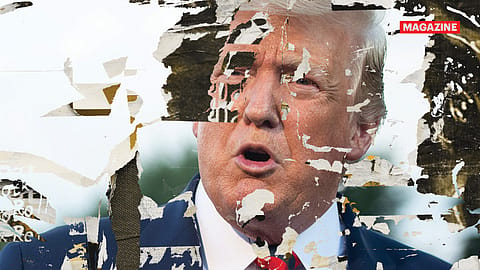How India Plans to Future-proof Trade as Trump’s Tantrums Continue
As the U.S. President’s meltdowns continue, India’s decision to put national interest above its largest trade partner has come at a cost. New Delhi now plans to diversify its export base.

This story belongs to the Fortune India Magazine global-brands-indian-sheen issue.
THE MAVERICK SIDE of U.S. President Donald Trump is no secret. But his post on Truth Social in early September was the quirkiest even by that yardstick. “Looks like we’ve lost India and Russia to deepest, darkest, China; may they have a long and prosperous future together!” he captioned a full-size photo of Prime Minister Narendra Modi, Russian President Vladimir Putin, and Chinese President Xi Jinping at the Shanghai Cooperation Organisation (SCO) Summit in China.
Ironically, it was Trump’s tariff tantrums that brought estranged neighbours, India and China, together, with Russia. With the developments, the ‘U.S.-India COMPACT (Catalyzing Opportunities for Military Partnership, Accelerated Commerce & Technology) for the 21st Century’ initiative, jointly announced by Trump and Modi early this year, teeters on the brink.
To isolate Russia and step up pressure on Putin to end the Ukraine war, Trump has resorted to imposing punitive tariffs on countries doing business with Moscow. And India has been at the receiving end. In August, India was slapped with 50% import tariffs: 25% to “correct” the bilateral trade “imbalance” and another 25% as a “penalty” for New Delhi’s oil imports from Russia.
However, his arm-twisting has not yielded much, at least in India’s case. So far, New Delhi has chosen not to retaliate against the unilateral tariffs or disengage with Russia — its major source of cheap crude oil. Instead, India has been rallying friends and attempting to build economic partnerships, the India-China-Russia bonhomie being one such example.
But India’s decision to put national interest above its largest trade partner has come at a cost. The high tariffs could hit 66% of India’s $86.5 billion worth of exports to the U.S., estimates Delhi-based think tank Global Trade Research Initiative. From August 27, over $60.2 billion of exports from the textile, gems and jewellery, and seafood sectors have been reeling under the 50% duty. These labour-intensive sectors are staring at a major crisis as several industrial hubs have started reporting job losses. A price disadvantage of 30–35% vis-à-vis competitors has made exports difficult, says S.C. Ralhan, president, Federation of Indian Export Organisations. According to chief economic advisor, V. Anantha Nageswaran, the tariffs can dent India’s GDP by 0.5-0.6% in the current fiscal.
Given the high stakes, India could have followed in the footsteps of Japan, Vietnam or the U.K. to enter into a quick trade deal with the U.S. to lower the tariffs. A mini Free Trade Agreement (FTA) and a pause on Russian oil imports would have made negotiations with Trump easier. India did try to sign a mini FTA. As a country that had initiated FTA talks with the U.S. even before Trump commenced his trade war, India hoped for a deal before the tariff reality struck. Multiple rounds of talks failed, though India’s official stance has been that the FTA talks will continue, irrespective of Trump’s tariff imposition.
Even as talks stalled, Modi said, “India will never compromise on the interests of its farmers, livestock rearers, and fishermen.” Hinting that the U.S. push for tariff cut by New Delhi on farm products was a deal-breaker, he added, “The welfare of our farmers is the highest priority.”
More Stories from this Issue
As the bilateral relationship enters rough waters, the next best plan for India is to minimise the impact by diversifying exports and strengthening exporters’ competitiveness. India also expedited its trade talks with several countries in recent months. It signed the India-U.K. Comprehensive Economic and Trade Agreement in July. The India-European Union FTA negotiations are in advanced stages, while the India-Oman FTA talks have concluded. The expansion of the India-Australia Comprehensive Economic Cooperation Agreement is underway, as are the FTA talks with South American countries such as Peru and Chile. The review of existing FTAs with ASEAN and Korea aims to strengthen India’s export base, making it a resilient trading power immune to the U.S.’s mood swings. At the SCO meeting and the July Brics summit, India made its plans clear—to future-proof trade.
India’s stoicism initially irked Trump, but true to his nature, he softened his rhetoric by September, praising New Delhi in another post on Truth Social. Announcing the continuation of talks, he said, “I feel certain that there will be no difficulty in coming to a successful conclusion for both of our Great Countries!” His “very good friend” Modi reciprocated in the same spirit, asserting the trade talks are likely to conclude at the earliest.
A favourable outcome for India — as small as the first tranche of the FTA materialising in a month or two and a tariff cut — will see only a temporary slide in India’s exports to the U.S. What is permanent will be India’s gains from diversifying its export base.